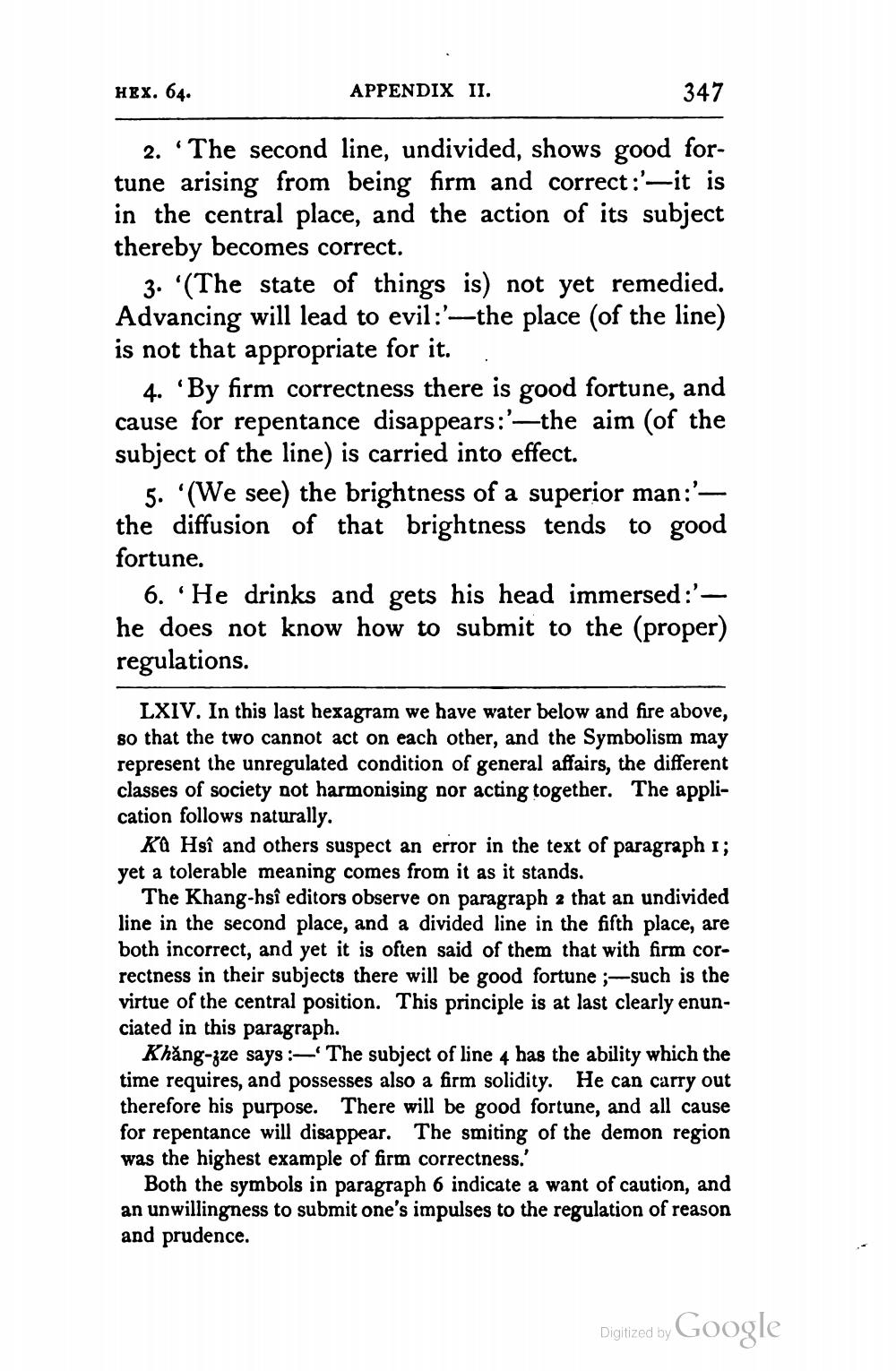________________
HEX. 64.
APPENDIX II.
347
2. "The second line, undivided, shows good fortune arising from being firm and correct :'-it is in the central place, and the action of its subject thereby becomes correct.
3. '(The state of things is) not yet remedied. Advancing will lead to evil:'-the place (of the line) is not that appropriate for it.
4. 'By firm correctness there is good fortune, and cause for repentance disappears:'—the aim (of the subject of the line) is carried into effect.
5. (We see) the brightness of a superior man:'the diffusion of that brightness tends to good fortune.
6. “He drinks and gets his head immersed:'-— he does not know how to submit to the (proper) regulations.
LXIV. In this last hexagram we have water below and fire above, so that the two cannot act on each other, and the Symbolism may represent the unregulated condition of general affairs, the different classes of society not harmonising nor acting together. The application follows naturally.
Ka Hsî and others suspect an error in the text of paragraph 1; yet a tolerable meaning comes from it as it stands.
The Khang-hsî editors observe on paragraph 2 that an undivided line in the second place, and a divided line in the fifth place, are both incorrect, and yet it is often said of them that with firm correctness in their subjects there will be good fortune ;-such is the virtue of the central position. This principle is at last clearly enunciated in this paragraph.
Khăng-zze says :— The subject of line 4 has the ability which the time requires, and possesses also a firm solidity. He can carry out therefore his purpose. There will be good fortune, and all cause for repentance will disappear. The smiting of the demon region was the highest example of firm correctness.'
Both the symbols in paragraph 6 indicate a want of caution, and an unwillingness to submit one's impulses to the regulation of reason and prudence.
Digitized by Google




